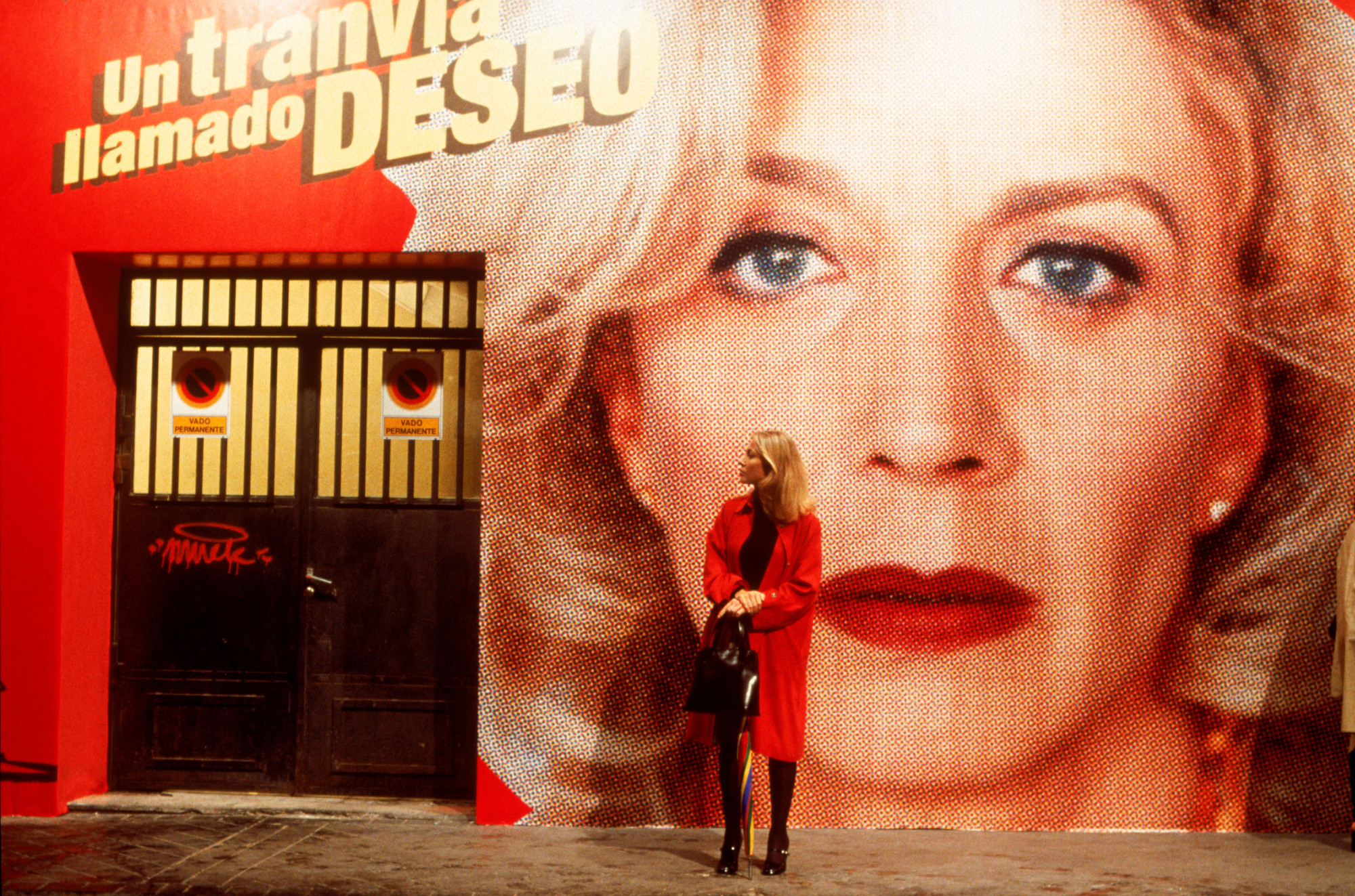Summary record
Video
"Wanteraktioun" and emergency shelters
Question by David Wagner
Since the winter of 2017/2018, Action hiver has been involved in a partnership with two night shelters managed by Caritas and the Red Cross (each of which has 11 beds), and with Inter- Actions' "Premier Appel" service, which is tasked with outreach to people in need during periods not covered by the services in place (7 days a week and from 17:00 to midnight).
We are concerned about two practices that have been brought to our attention and that were part of the initial concept of "Wanteraktioun" in 2001.
It appears that when the temperature is above -3 degrees Celsius, people without residence permits are not admitted, no matter what time they arrive at the reception centre.
In addition, even below this temperature, people without residence permits do not have access to the same resources as those who do: they are required to sleep on wooden pallets rather than on beds like the other clients.
Moreover, aside from Action hiver, the "Premier Appel" service has only one bed in each night shelter, which is reserved for homeless youth in need. In practice, both beds fill fast, forcing homeless youth to go back onto the streets or to the Abrigado or Ulysse shelters, where they are exposed to drug addiction. The challenge for social workers therefore remains getting young people off the streets as quickly as possible to avoid this vicious cycle.
In view of the above, we would like to put the following questions to the College of Aldermen:
- Is the College of Aldermen aware of the discriminatory practices against people without residence permits at night shelters?
- What steps does the College of Aldermen plan to take to curb such practices?
- What measures does the College of Aldermen plan to put in place to deal with the emergency that threatens the lives of the affected people, particularly homeless youth outside the period covered by Action hiver?
- What is the timeline for such measures?
- Does the City anticipate increasing the number of beds in the emergency shelters outside the period covered by Action hiver?
Response by Maurice Bauer
Alderman Bauer says a distinction must be made between " Wanteraktioun" and the "Wanteraktioun" night shelter. "Wanteraktioun" is an initiative that theoretically begins on 1 December but that may begin earlier and/or end later at the discretion of the Ministry of Family Affairs, Integration and the Greater Region (Ministère de la Famille, de l'Intégration et à la Grande Région) depending on temperatures, so in principle the City of Luxembourg and its municipal departments are not directly involved.
In terms of night shelters, there are two: one on Rue Michel Rodange and one on Rue d'Eich. The Red Cross and Caritas workers go out to look for homeless people in the streets, or these people go to these centres of their own initiative. Furthermore, the night shelters operate all year round on the basis of particular set criteria, and the City of Luxembourg is not involved in the "Wanteraktioun". Thus the two initiatives are more or less separate.
In answer to the first question, the City of Luxembourg has not been informed of discriminatory practices; on the contrary, it has been informed that no distinction is made between people with and without a residence permit, and that the only difference in treatment applies to people who are taken in and may be violent or have aggressive pets with them.
If the homeless individuals have a pet, these animals can join their owners at the shelter, which usually allows them in.
Regarding the question about steps to be taken by the City, given that the City is not aware of discriminatory practices that seem not to exist, there are no special measures to be taken.
To answer the question about what measures the College of Aldermen intends to adopt to help the affected people, particularly homeless youth, the City holds weekly meetings with the field staff to discuss the current situation. The finding is that there are enough spots in the night shelters. Moreover, the City is currently engaging in discussions with the other authorities with the aim of expanding the current actions, such as by calling on Housing First or potentially adding another night shelter. He notes that in a "crisis situation" where people have no place to spend the night, the Abrigado shelters are a possible solution as a " night refuge".
In conclusion, on behalf of the City of Luxembourg, Alderman Bauer again thanks the employees of these shelters, whose work and commitment to people in need is invaluable.
Venue for athletics events and the "Wunnquartier Stade".
Question by Tom Krieps
I would like to ask a question about the "Wuunquartier Stade".
During the press conference, a spreadsheet with a schedule of planned events was distributed. It showed that the Josy Barthel Stadium is slated for demolition and that a new football and rugby stadium is being built.
However, with regard to athletics events, the spreadsheet states plainly that "no alternative has been found yet for athletics events". You surely understand that the close-knit athletics community is likely to react negatively to this news.
- Could you therefore confirm that there is an actual plan for athletics events and that this information is an error or out of date?
Response by Lydie Polfer
The mayor and chairwoman states that obviously there is a need and the City would like to find an alternative location for athletic activities, which are currently held at the Josy Barthel Stadium. Several alternative venues are currently being considered, and they are being assessed in view of deciding on the best option as soon as possible.
Future use of the Hôtel de la Poste
Question from Claudine Konsbruck
Since the Post Office moved its offices to Rue Mercier in 2017, the Hôtel de la Poste building on Rue Aldringen has been vacant.
This is a unique, Renaissance-style structure in the city centre.
The site and surroundings will be showcased and promoted in the near future when the Centre Royal Hamilius opens, and it is a shame that this superb 11,000 m² site remains vacant.
I would therefore like to put the following questions to the College of Aldermen:
- What is the current classification of the property, and what are the options for renovation or even expansion?
- Can the College of Aldermen provide us with information on the current status of this project?
- What is the status of the discussions with the managers of POST?
Response by Lydie Polfer
The mayor and chairwoman responds that the City and POST Luxembourg are in communication and that the building belongs to POST Luxembourg. There were various projects in the pipeline that did not necessarily reflect the City's vision. First, there were plans to create a hotel, at least in a significant portion of the building, but initially, this project seemed too complicated. However, this project now seems feasible. Nevertheless, the City cannot take a position before POST Luxembourg finalises its plan.
The mayor and chairwoman is optimistic about finding a use for the building, and she notes that in the past, the Post Office building was more visible because Place Hamilius was used as a bus terminal. But going even further back, the square was once occupied by the Aldringen school, which was demolished in the 1960s to make way for the bus terminals. And when this school existed, there was no clear view of the Post Office building.
Currently, Place Hamilius is not in great condition as it is still partly under construction, but the new paving in front of the Post Office building will help showcase the building. The few buildings located on the square are more than acceptable, particularly compared to what existed before, such as the former Hamilius building and the former La Luxembourgeoise building, etc.
In summary, the mayor and chairwoman hopes soon to be able to provide a definite, concrete response about the future of this building.
Redevelopment of Place Spidolsgaart in Pfaffenthal
Question from Claudie Reyland
In June 2017, there was a meeting with citizen participation on proposals submitted by residents and the district's local interest groups on the redevelopment of Place Spidolsgaart in Pfaffenthal.
At issue is a project to move the car park currently on this square to alongside Rue Vauban.
Cars would enter via Rue Vauban, and the exit would be moved toward the intersection of Rue du Pont and Rue Vauban; this would free up the area near the bridge and the former school. This would prevent clashes between pedestrians/cyclists and motorists.
This new arrangement would also entail eliminating the outbuildings adjacent to the fire station. The western façade could then accommodate an information board. A new storage site could be appended to the south façade of this building, and the current transformer could be incorporated into this structure.
The development would include the installation of a traffic-calmed zone on Rue Vauban on the section in front of the church. This would create a shared space in which pedestrians, cyclists and motorists would have equal status.
In addition, there would be plans to put in a beverage stand, enlarge the existing playground, create a pétanque green, put in lounge chairs, etc.
This project was developed by the City of Luxembourg's municipal departments after consultation with the residents and local interest groups, and it was presented to them during a second meeting in Pfaffenthal on 18 April 2018.
We believe that the entire redevelopment of this central square will be a boon for this district, which has already experienced positive changes since the elevator opened, among other developments. With these points in mind, I would like to put the following questions to the College of Aldermen:
- What is the status of this project?
- When will the project be unveiled?
- When will the redevelopment of Place Spidolsgaart be able to start?
Response by Serge Wilmes
Alderman Wilmes states that the project has not been forgotten and that the Service Espace public, fêtes et marchés (Public Spaces, Festivals and Markets Department) is leading it. The department ran an initial consultation with Pfaffenthal residents. After that, an initial project was developed, and then the residents were again asked for their opinion of this plan. The project was then sent back to the City of Luxembourg's municipal departments.
At this time, it is up to the College of Aldermen to provide agreement in principle on the plans that were coordinated by the Service Espace public, fêtes et marchés. Once the College of Aldermen has given agreement in principle, the project is passed on to the technical departments that are responsible for executing it; this often means the Service Voirie (Roads Department). The fact remains that this department has not yet been able to draft detailed technical drawings on the project to share with the College of Aldermen. However, this is expected to be done by the end of this year so that work can begin in 2020. Finally, the Service Espace public, fêtes et marchés is also in the process of taking on staff to carry out all its projects.
Civic participation workshops for Pulvermühl residents
Question byLinda Gaasch
With the former Secalt site being redeveloped into a residential area, the Pulvermühl district is in flux. In response to a request by residents and with the aim of improving the quality of life in this district, civic participation workshops have been organised.
The first civic participation workshop was held on 23 April 2018 and the second on 1 October 2018. These workshops were a great success and generated numerous proposals from the residents. Among these proposals are concrete ideas for traffic, as well as requests relating to daily life in the district and interacting with other residents, such as the creation of a meeting centre adjoining the playground on Rue du Fort Dumoulin. However, the residents of Pulvermühl, who would like to be involved in the development of their district, have not received any updates.
With these points in mind, I would like to put the following questions to the College of Aldermen:
- What was the outcome of the citizen participation workshops of 23 April and 1 October 2018?
- Which of the proposals taken forward from these civic participation workshops will be implemented and when?
- What are the next steps regarding civic participation in Pulvermühl?
Response by Serge Wilmes
Alderman Wilmes states that there is a desire on the parts of both Pulvermühl residents and the new College of Aldermen to come up with a future plan for Pulvermühl (plan for new residential buildings, improved quality of life in the district, etc.), so the civic participation workshops were a great success. The Service Espace public, fêtes et marchés has also taken on all the coordinating and planning for this project. The fact remains that the technical departments including the Service Voirie still need to draft detailed technical plans to be approved by the College of Aldermen.
The central square on which there is a war memorial and a car park will need to be made more attractive and functional so as to make the public space more welcoming. Behind the war memorial, there is a slightly hidden square on which the Service Parcs (Parks Department) will be creating a playground.
As for a date on which the solutions approved during the workshops will be implemented, the City is still waiting to receive proposals from the planning departments for the playground and is, as yet, unable to provide a specific timetable.
Urban farming
Question from Elisabeth Margue
The urban farming phenomenon has achieved unparalleled success in many cities around the world. The benefits of urban farming are both ecological (reduced air pollution, improved soil quality, local production, etc.) and social (social cohesion generated by community gardens, etc.).
As such, I would like to put the following questions to the College of the Mayor and Aldermen:
- What percentage of the total surface area of Luxembourg City is reserved for farming?
- Is the City of Luxembourg considering setting up urban farming projects on the roofs of buildings it owns, in public squares or on unbuilt land?
- Is the City of Luxembourg aware of any private, community-driven urban farming projects currently underway in the city?
- How does the City of Luxembourg intend to promote private urban farming projects?
- To what extent does the City of Luxembourg intend to promote green façades on public buildings?
Response by Patrick Goldschmidt
Alderman Goldschmidt replied that when Councillor Margue asked her question in June 2019, the Ministère de l'Environnement, du Climat et du Développement durable (Ministry of the Environment, Climate and Sustainable Development) had already presented a national strategy on the "smart nation and urban farming" on 23 May 2019.
In addition, a map of potential areas for urban farming, covering the entire country and therefore also Luxembourg City, has been published by the Administration du Cadastre et de la Topographie (Land Registry and Topography Administration) on the website Geoportail.lu. The College of Aldermen has also given its consent for municipal administrations to provide their data on the topic, which the City of Luxembourg would be willing to do. However, the municipal departments have not yet been contacted by the project owner.
To answer Councillor Margue's question about surface area: the farmland that the City of Luxembourg has at its disposal occupies 12.1% of the total surface area of the city. Allotment gardens occupy 0.4% of the total surface area of the city, which of course does not include private gardens in residential areas or on the roofs of residential buildings.
To answer the second question: currently, the City of Luxembourg has no plans to implement urban farming projects on unbuilt land but, for quite some time now, the City has been providing land for the development of family gardens, community gardens and allotment gardens, and it also manages the gardens, vineyards and orchards that belong to the City, such as the Klouschtergaart, for example. The City also owns a number of farm animals and undertakes projects with many schools, especially primary schools (e.g. the Gasperich school), and it intends to continue and even develop these projects further. In addition, the City promotes urban farming on municipal and private property as part of the studies it has been conducting on the new urbanisation projects that it supports, such as Laangfur, Op der Schleed and Porte de Hollerich projects.
In answer to the third question: the City of Luxembourg is aware of several private, community-driven projects involving experimental gardens, such as the CELL (Center for Ecological Learning Luxembourg) project, the FUAK (Kirchberg Urbanisation and Development Fund) community gardens project and the Terra and Co-Labor market-garden producers.
To answer the fourth question: the City promotes private urban farming projects as part of its policy on urban planning, as well as through a map that is updated by its Service Topographie (Topography Department) and through the association, LUGA 2023, which will also seek to promote and develop urban farming.
Finally, to answer the fifth question: apart from the existing standard practice of greening walls with climbing plants, there are currently no plans to introduce green facades on public buildings, but LUGA 2023 could serve as a catalyst for urban farming in Luxembourg City.
Average length of residence of the population in Luxembourg City
Question by Carlo Back
During the discussion on the drafting of the new general development plan (plan d'aménagement général – PAG) in 2017, the College of Aldermen shared, among other things, the following data: the average length of residence of the population in 2016 was 6.5 years, while in 2006 this average was around 16 years. Combined with fast population growth, this short average length of residence sparks many questions and challenges, particularly when it comes to the social cohesion of the population in Luxembourg City.
As such, I would like to ask the following questions:
- What is the current average length of residence for the population living in the city?
- What is the average length of residence of Luxembourg nationals compared to the non-Luxembourgish population in the city?
- What are the average lengths of residence for the different districts of the city? Are there differences among the districts?
Response by Lydie Polfer
The mayor and chairwoman claims that answering this interesting question required considerable research by the municipal departments involved, and that is why it took a while to get a response. In terms of the figures themselves, the outlines will be shared in the meeting and the detailed figures on the districts will be published or at least distributed.
To see how the numbers changed, the statistics for 2000, 2010 and 2018 were compared, though digital records go all the way back to 1984.
Another factor to keep in mind is that city residents move between districts while staying within Luxembourg City. The calculated average shows that:
- in 2000, the City had 78,648 residents with an average length of residence of 23.06 years,
- in 2010, there were 91,498 residents with an average length of residence of 17.91 years
- and in 2018, there were 114,827 residents with an average length of residence of 14.59 years.
A comparison between the Luxembourgish and non-Luxembourgish populations clearly shows some major differences:
- in terms of the Luxembourgish population, the city had:
- in 2000, 40,230 residents with an average length of residence of 33.3 years,
- in 2010, 36,022 residents with an average length of residence of 30.5 years
- and in 2018, 36,987 residents with an average length of residence of 27 years
- in terms of non-Luxembourgish residents, the city had:
- in 2000, 38,417 residents with an average length of residence of 12.4 years,
- in 2010, 55,475 residents with an average length of residence of 9.7 years
- and in 2018, 77,839 residents with an average length of residence of 8.7 years.
The statistics by district will be forwarded to all municipal councillors, as drafting the breakdowns could take quite some time.
In response to Councillor Back's question, she states that the data presented during the discussions on the drafting of the new PAG in 2016 was collected by the planning department responsible for the PAG project at the time. Although the data was presented in 2016, it actually applied to 2012. She will request details from the planning department about the methodology used at the time to arrive at the statistics presented to the municipal council in 2016. Finally, she states that the statistics she presented today are from the City, and the PAG statistics may be based on data from STATEC.
E-scooters
Question from Claudine Konsbruck
E-scooters have been overrunning Luxembourg City's streets since 15 October 2019: apparently, 250 of these have been made available in different districts of the city.
It should be noted that, at present, there is no legal framework regulating this alternative mode of transport and that the municipal authorities were not informed in advance by the supplier of the scooters in question, the American company BIRD.
Incidentally, a public petition calling for a ban on these scooters was submitted to the Chamber of Deputies this week.
In his response dated 7 March 2019 to parliamentary question no. 300 by Max Hahn, the minister of public works (Ministre des Travaux publics) stated that during the "road safety" roundtable in February 2019, the establishment of a coherent legal framework permitting the safe use of these vehicles on public thoroughfares had been discussed and proposed as a measure to protect users of these modes of transport.
Now that a first initiative has been launched by a scooter rental company, there is a risk that this will inspire other competing companies, so we can expect an influx of similar initiatives, just like in cities in other countries.
In the meantime, the e-scooters are a plague in the city centre and users leave them wherever they see fit. Not only are these unauthorised drop-offs disorderly and unattractive; they may also pose a genuine danger to other users of the public thoroughfares.
In light of this, I would like to put the following urgent question to the College of Aldermen:
- What means of action does the City have at its disposal to deal with this initiative, which leaves the City authorities running to deal with a change that has already happened?
- Has there been communication with BIRD in the meantime, and what was the outcome of these discussions?
- How does the City intend to react and how does it plan to deal with other similar initiatives?
Response by Lydie Polfer
The mayor and chairwoman states that the City was contacted over the last two years by six different companies asking to set up a scooter rental system in Luxembourg City, and the City responded that it was not interested at the time because it was busy setting up the electric bicycle system.
On 7 October 2019, one company decided to disregard the City's decision by placing e-scooters around Luxembourg City. Following this, a letter was sent immediately to BIRD, ordering it to remove the e-scooters and summoning it to a meeting. Due to the unavailability of the BIRD representatives, who were in Dubai, the meeting took place on the day they arrived in Luxembourg, on 17 October 2019. The police and City legal advisers were at this meeting, and the police told the BIRD representatives emphatically that they were acting in violation of Article 3 of the City of Luxembourg's general regulations on public order and safety (Règlement général de police), which states that it is prohibited to obstruct public thoroughfares to perform a job or engage in an industrial, commercial, artisanal or artistic activity without authorisation by the mayor. The authorisation may be combined with terms and conditions meant to keep public thoroughfares clear and accessible, and to ensure public safety, order and hygiene. The police also said they would in no way tolerate the presence of BIRD's e-scooters on public thoroughfares.
BIRD was told that if they did not remove the e-scooters from the public thoroughfares on their own initiative by the end of that afternoon, an administrative confiscation would be ordered for the vehicles on the grounds of the new law of 18 July 2018 on the Grand Ducal Police granting new powers to the mayor, and more specifically its Article 13, which states that when objects or substances present a grave, tangible or imminent danger for public law and order in publicly accessible places, and when all other measures intended to remedy the situation have proven ineffective, the mayor may carry out an administrative confiscation of these objects or substances.
Around 16:00, BIRD confirmed its intention to voluntarily remove the e-scooters from the public thoroughfares over the next two days.
In addition, BIRD was notified that it must, like any other company, refrain from relaunching this kind of initiative in the future as their free-floating concept constitutes a genuine danger given that e-scooters were found on the tram rails. Incidentally, this same problem has been encountered in several large cities.
Finally, she stresses that if in the future the City were to make plans to procure an e-scooter rental system, it would do so through a public procurement contract in which the City would state its terms, including not allowing for a free-floating system, stipulating locations of e-scooter docks, and setting the cost of their rental, and would then ultimately select the company that offers users the best service.
Audit of municipal finances by the City
Question by François Benoy
As was reported in the media, the two civil servants of the Hesperange municipal administration who embezzled large sums of money are now on remand. The two civil servants allegedly embezzled several million euros' worth of municipal funds over the course of approximately 20 years to accounts belonging to fake companies, despite regular audits by the municipal authorities and the Ministère de l'Intérieur (Ministry of Home Affairs).
As such, I would like to put the following questions to the College of Aldermen:
- What audit mechanisms are currently in place in the City of Luxembourg's municipal administration to prevent such embezzlement?
- How many audits have been carried out within the finance departments in the last few years? What were the purposes of these audits? What were the findings?
- Following what happened in the Hesperange municipal administration, does the College of Aldermen see a need to review or improve the audits within the City of Luxembourg's municipal administration? If so, by what means?
- To improve audits, does the College of Aldermen believe it pertinent to conduct an external audit of our finance departments?
Response by Laurent Mosar
Alderman Mosar says that he is pleased to be asked this question, which gives the College of Aldermen the opportunity to present, in specific terms, the established audit procedures for the municipal finances, and the security measures taken in this context. He notes that the City has more than 40 municipal departments with over 4,000 employees and that it issues approximately 80,000 invoices annually, which is equivalent the operations of a large business. Unlike other municipalities, which use the accounting software GestCom, which is managed by the Syndicat Intercommunal de Gestion Informatique (SIGI – inter-municipal syndicate for IT management ), the City of Luxembourg chose SAP, which is a more suitable management software.
Although there is no absolute guarantee against fraud or embezzlement within the City, several procedures and security mechanisms have been implemented, making it possible to detect irregularities quickly. The College of Aldermen, along with the Service Finances (Finance Department), has laid down internal operating rules that clearly and transparently delegate specific responsibilities to the different positions within the municipal administration. One of the most important rules is the strict separation between finances and budget accounting; that is, between the Service Finances and the Recette communale (City Treasury), which is tasked with paying invoices and collecting revenue. As a security and precautionary measure, the City has limited the number of people who are entitled to change a supplier's information in the software; there are currently four people with this authorisation. Internally, the Service Finances performs a financial audit to vet all orders over €1,500, to also check that all procedures have been observed.
When it comes to formalising orders, for a number of years the blocks of " order forms " have been banned for orders under €25,000, which must be made through the SAP software; this makes any fraud or cheating extremely difficult.
The role of theRecette communale is also vital as it prepares and approves the " multiline " payments that go to suppliers. At this level there is also oversight: namely, the identification of the correct partner, and of the bank account by checking whether it corresponds to the account listed on the invoice. He notes that along with the internal audits, there have been the outside audits as stipulated by law – specifically, the quarterly audit of the accounts of the Recette communale by a third-party auditor on behalf of the College of Aldermen, as stipulated by Article 146 of the municipal law of 13 December 1988, and the audit of the municipal budgets, accounts, accounting and finances by the Service de contrôle de la comptabilité des communes (Municipal accounting audit department) under the authority of the minister of home affairs as stipulated in Article 147 of the aforementioned municipal law. Every summer, the staff of this department spent two weeks on site at the Recette communale to perform audits, and prepare a report that is sent to the College of Aldermen. Ultimately, although no municipality is shielded from fraud or embezzlement, the City has put various procedures in place to safeguard against it as far as possible.

















